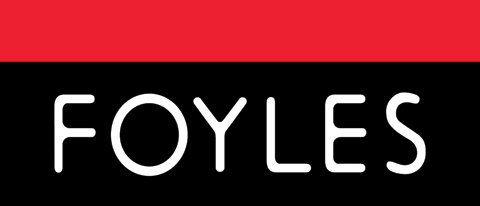Leaders are often seen as products of the moment, but true leadership emerges when preparation meets the opportunity to step up.
– Piers Fallowfield-Cooper
Has Kamala Harris always been ready to rise as a leader, been shaped by circumstance or is she simply the ultimate chameleon, able to be whatever you are looking for?
The public often seeks a saviour in times of crisis – a white knight riding in to rescue us from the mess we’ve created. This instinct is ancient. In the time of prophecies, messiah figures emerged regularly, each vying to fulfil the people’s yearning for better times. Today, we place our faith more in political rather than religious leaders, sometimes building a place for them to ‘tie up their white horse’, ready to defeat the dragons of our time. In Harris’ case, the ‘dragon’ is none other than her rival for the presidency – former President Donald J. Trump.
This instinct might be ancient, but, just as it’s relevant in today’s political world, it’s also relevant in the business world. In organisations, when turmoil hits, there’s often a tendency to place huge faith in changed leadership – the new CEO riding into town. But are these leaders truly the heroes of the moment, or have they been quietly preparing behind the scenes all along, or has the burden of potential greatness been thrust upon them? The right place, right time – a coincidence of fate?
And is Harris truly that saviour, or are we simply projecting our desire for rescue onto someone now conveniently standing in the spotlight?
Argument 1: The Created Leader (Circumstance)
It’s easy to argue that Kamala Harris is a product of the moment – a leader crafted by both public need and a vacuum in political leadership. Like the ancient messiah figures, she may have appeared at the right time, embodying the hopes of a weary electorate ‘anyone other than these candidates’.
Consider the view we are given[1]: Harris is consistently depicted in photographs surrounded by young, smiling people, a symbol of joy, hope and the future. Compare that to images of Donald Trump – perpetually angry, defiant and locked in conflict. This contrast could not be stronger. Depending on your view of what good leadership looks like (optimistic, with a vision of what’s possible or strong, defiant and unwilling to bend) would lead you naturally to support one candidate rather than the other.
We’ve seen this pattern repeat in business, too. When a new CEO arrives, we instinctively prepare the metaphorical white horse, ready to anoint the next saviour. Take the appointment of Brian Niccol as the CEO of Starbucks. Investors rejoiced, sending shares soaring by 25% in a single day, adding a staggering $21.4 billion to the company’s market value. Niccol’s reputation preceded him – his success at turning around Taco Bell had earned him the status of a corporate knight in shining armour, now ready to rescue Starbucks from its recent struggles.
But even white knights sometimes have ‘feet of clay’. In August 2024, Niccol was, literally, hailed as the ‘messiah’ Starbucks desperately needed to restore its footing yet, within days, public opinion soured. The spotlight shifted from his potential to lead to the perks in his contract – namely, the controversial provision that allowed him to work remotely from Newport Beach, California, and commute to Starbucks’ Seattle headquarters via private jet. The narrative quickly morphed: instead of riding in on a white horse to save the day, Niccol was seen as disconnected from the company’s challenges on the ground as the white horse Starbucks had figuratively tied up for Niccol was, in reality, a luxury private jet.[2]
However, just as with political leaders, are these CEOs more often the product of a carefully crafted public image rather than substantive leadership? The expectation for them to ‘rescue’ the company may be less about their actual skill set and more about the company’s desperation for change. It’s not always based on policies, plans or past performance – it’s often about our longing for change and the idea that someone will rescue us.
Argument 2: The Prepared Leader (Potential)
On the other hand, perhaps Kamala Harris is the leader who has always been waiting in the wings ‘hiding in plain sight’. As General Norman Schwarzkopf famously said: “When given command, take it.” Harris may not have simply been created by the moment but rather seized the moment with both hands, showing the preparedness and capability she’s had all along.

From Are You Still The Future? Chapter 2: In the desert with Stormin’ Norman (again)
Her track record prior to running for this office supports the argument of preparedness and capability. As San Francisco District Attorney, she implemented significant reforms. As California’s Attorney General, she fought for environmental justice and consumer rights, gaining respect across the political spectrum. As a Senator, her questioning of Attorney General Jeff Sessions during a hearing on Russian interference in the 2016 election and the memorable exchange with Supreme Court Justice nominee Brett Kavanaugh during his confirmation hearing drew significant attention. You could therefore argue that Harris didn’t stumble into her current role of Vice President – she earned it.
And now, the Arthurian metaphor of pulling the sword from the stone fits her perfectly. Her fans say she was ‘always the one meant to wield the sword’ – all she needed was the right opportunity – or did timing fix it for her?
In fact, the perception of vice presidents as ‘average’ is not new. Joe Biden himself was often viewed as a background figure during the Obama administration, only later emerging as a significant leader in his own right. Similarly, Al Gore was seen as somewhat passive during Bill Clinton’s presidency but he went on to become a global leader in environmental activism. Vice Presidents often play a supportive role by design, and in order not to ‘upstage the boss’. Their potential to lead isn’t fully realised until the spotlight shifts in their direction.
Harris’ rise mirrors many in business who seem to emerge out of nowhere but have been diligently preparing behind the scenes for years. Think of corporate leaders like Satya Nadella at Microsoft, who didn’t have the glamour of being an external hire but brought deep internal knowledge and readiness to lead when the opportunity presented itself. Harris’ ascent from District Attorney to Attorney General to Senator to Vice President follows this model of quiet preparation, waiting for the right moment to act.

From Are You Still The Future? Chapter 2: In the desert with Stormin’ Norman (again)
Leadership isn’t really about flashy entrances or PR campaigns. Sometimes, it’s simply about being ready when the moment calls. Harris’ journey suggests she is far from an accident of circumstance. She may have been the right person waiting for the right time.
Biases in Perception:
Bias plays a powerful role in how we judge leaders and Harris is no exception. Those who believe in her see potential; those who don’t see mediocrity. Both sides may be missing the bigger picture. Our perceptions of Harris – and our perceptions of leaders in general – are shaped by the biases we carry. Bias in what good leadership is: leaders have to be ‘strong’, leaders must be able to ‘create a compelling vision for a positive future’ etc…
Whether that’s confirmation bias, the halo effect, the bandwagon effect or optimism bias, you can be sure bias is at work. In writing this article, my own optimism bias shows right through. Until she was anointed … and then stepped up, I was a Harris doubter.
“We don’t see things as they are, we see them as we are.” — Anaïs Nin
Whether she’s a product of circumstance or a leader long-prepared, Kamala Harris represents the delicate balance between personal readiness and the unpredictable demands of leadership. In the end, it may not matter how we view her emergence – only how she navigates the path ahead.
Conclusion:
The truth is, leadership is rarely a case of either/or. It’s often a blend of circumstance and preparation, with a healthy dose of timing thrown in. Kamala Harris may well be the product of the moment – shaped by the public’s longing for a rescuer – but she is also someone who has been preparing for leadership her entire career. Similarly, organisational leaders often rise to the occasion, combining their readiness with the opportunity.
As Shakespeare wrote: “There is a divinity that shapes our ends, rough-hew them as we may.” In both politics and business, leadership is often about being prepared when fate calls. Whether it’s a political leader like Harris or a corporate executive stepping into a CEO role, sometimes it’s about having the readiness to lead when the moment demands it.
Piers in Your Pocket:
Here are four key takeaways from this reflection on leadership:
-
- Permission and Command: Are there individuals in your organisation who are waiting for permission to step into leadership? Give them the chance to pull the sword from the stone.
-
- Bias in Leadership: Be aware of the biases that shape your view of leadership. Are you overlooking high-potential individuals because they’re under the wrong boss or in the wrong circumstances or don’t match your view of great leadership?
-
- Trust the Process: Sometimes, leadership is shaped by both preparation and circumstance. Trust that, sometimes, the right people will emerge when the moment demands it.
-
- Be Prepared to Pop-up: Be prepared for the pop-up leadership opportunities as I discuss in Chapter 2: In the desert with Stormin’ Norman (again) in Are You Still The Future?
“Luck is what happens when preparation meets opportunity.” — Seneca
1 Many, especially in states along the Mexican border, believe she’s failed in the one key task she was given as VP ‘sort out the border’.
2 A week ago, Starbucks’ new CEO was a ‘messiah’…and then everyone found out about his 1,000-mile private-jet supercommute https://fortune.com/2024/08/23/starbucks-ceo-brian-niccol-private-jet-commute/
Click the image to download a PDF version to keep & share


/Amazon_(company)-Logo.wine.png)


